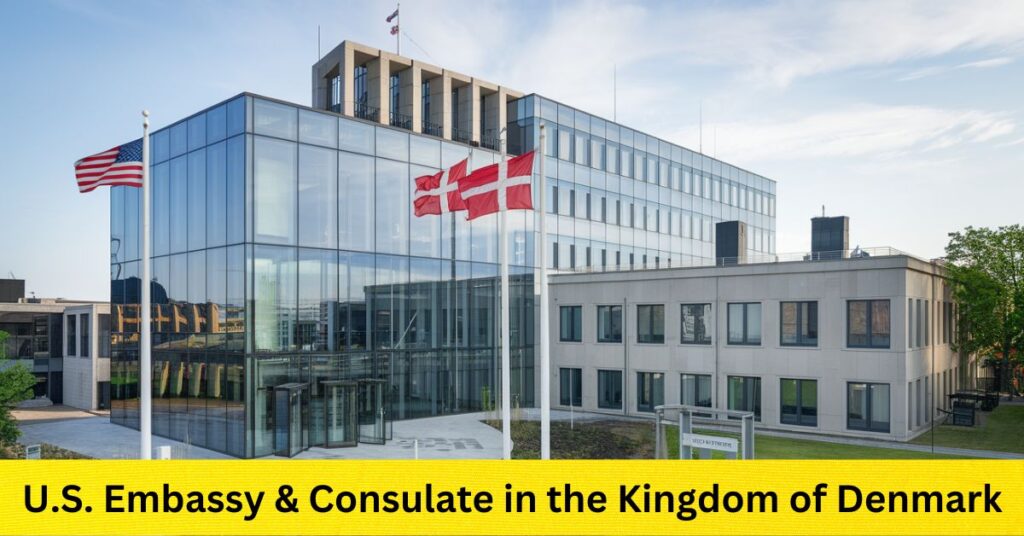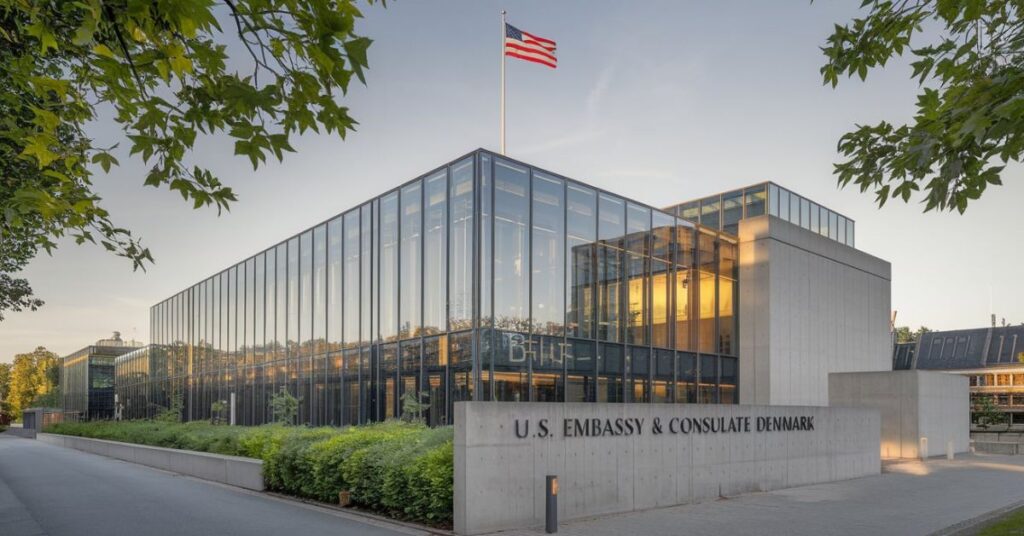
In the heart of Copenhagen stands a beacon of American diplomacy: the U.S. Embassy & Consulate in the Kingdom of Denmark. This institution serves as more than just a diplomatic outpost; it’s a bridge connecting two vibrant democracies, fostering understanding, and nurturing the longstanding friendship between the United States and Denmark. For Americans living in Denmark and Danes curious about U.S. politics, the embassy is an invaluable resource. Let’s embark on a journey through the intricacies of American democracy, viewed through the unique lens of U.S.-Danish relations. U.S. Embassy & Consulate in the Kingdom of Denmark.
Political Parties in America: A Danish Perspective
To a Danish observer, the American political landscape might seem both familiar and foreign. While Denmark boasts a multi-party system, the U.S. is dominated by two major parties. This difference often piques the interest of Danish citizens seeking to understand their American allies better.
The U.S. Embassy in Denmark plays a crucial role in explaining these nuances. Through cultural events, educational programs, and public diplomacy initiatives, embassy staff help Danes navigate the complexities of American politics. They might explain, for instance, how the U.S. system allows for a diversity of views within each party, somewhat mirroring the coalition-building seen in Danish politics.
“Understanding each other’s political systems is key to strengthening our diplomatic ties,” says a spokesperson from the U.S. Embassy in Copenhagen. “We’re here to bridge that knowledge gap.”
The Two-Party System and the Two Major Parties
The American political arena is primarily contested between two behemoths: the Democratic and Republican parties. This duopoly shapes not just domestic policy, but also influences U.S. foreign relations, including those with Denmark. U.S. Embassy & Consulate in the Kingdom of Denmark.
Democrats generally advocate for:
- Progressive social policies
- Expanded government services
- Environmental protections
Republicans typically support:
- Conservative social values
- Limited government intervention
- Strong national defense
While third parties and independent candidates exist, they face significant hurdles in gaining widespread support. This two-party dominance can be perplexing to Danes accustomed to coalition governments. The embassy often fields questions about how this system impacts U.S. foreign policy, explaining how shifts in party control can lead to changes in international engagement.
History of the Democratic and Republican Parties

The roots of America’s current political divide run deep, stretching back to the nation’s founding. The Democratic Party, tracing its origins to Thomas Jefferson’s Democratic-Republican Party, has evolved from a champion of agrarian interests to a proponent of progressive policies. The Republican Party, born in the crucible of the anti-slavery movement, has transformed from the party of Lincoln to a bastion of conservative values.
Key historical moments have shaped both parties:
- Civil War (1861-1865): Solidified Republicans as the party of abolition
- Great Depression (1929-1939): Led to Democrats championing social welfare programs
- Civil Rights Movement (1954-1968): Realigned party demographics
- Reagan Revolution (1980s): Ushered in an era of conservative dominance
Understanding this history helps Danes contextualize current U.S. political debates and policy decisions that may impact international relations. U.S. Embassy & Consulate in the Kingdom of Denmark.
Related Post: U.S. Embassy & Consulate in the Kingdom of Denmark
The Structure of the U.S. Political System
At its core, the American system is built on the principle of checks and balances, distributing power among three branches of government:
- Executive (President)
- Legislative (Congress)
- Judicial (Supreme Court)
This separation of powers can sometimes lead to gridlock, a concept that might seem inefficient to observers from parliamentary systems like Denmark’s. The U.S. Embassy often explains how this intentional friction is designed to prevent any one branch from becoming too powerful.
Presidential election process steps
The road to the White House is long and complex. Here’s a simplified breakdown:
- Primaries and Caucuses: Parties select their nominees
- National Conventions: Nominees are officially crowned
- General Election Campaign: Candidates traverse the nation, debating and rallying support
- Election Day: Americans cast their votes
- Electoral College: 538 electors formally elect the president
U.S. political system diagram
[Insert visual representation of the U.S. political system here]
List of presidential election years
Recent and upcoming presidential elections:
- 2016: Donald Trump (R) elected
- 2020: Joe Biden (D) elected
- 2024: Next presidential election
- 2028: Subsequent election
U.S. president is elected for how many years
The American president serves a four-year term and can be re-elected once, for a maximum of eight years in office. This limit, enshrined in the 22nd Amendment, was introduced after Franklin D. Roosevelt won four consecutive terms. U.S. Embassy & Consulate in the Kingdom of Denmark.
U.S. political system explained
American democracy is founded on principles of individual liberty, equal rights, and representative government. While sharing these core values with Denmark, the U.S. system differs in its:
- Federal structure, balancing state and national powers
- Strong emphasis on individual rights and limited government
- Two-party dominated landscape
How are presidential candidates chosen by their party
The process of selecting a presidential nominee is a marathon, not a sprint. It involves:
- Exploratory Committees: Potential candidates test the waters
- Primaries and Caucuses: State-by-state contests to win delegates
- Superdelegates: Party leaders who can support any candidate (primarily in the Democratic Party)
- National Conventions: Delegates officially nominate their party’s candidate
Electing a President: From Copenhagen to Washington D.C.
For U.S. citizens residing in Denmark, participating in American democracy doesn’t stop at the water’s edge. The U.S. Embassy & Consulate plays a vital role in ensuring that expatriates can exercise their right to vote.
Embassy services for overseas voters include:
- Providing absentee ballot request forms
- Offering information on state-specific voting requirements
- Serving as a dropoff point for completed ballots
These votes from abroad can be crucial in tight races, underscoring the global nature of American elections.
The Road to Choosing a Presidential Candidate: Understanding Political Primaries
Primary elections and caucuses are the first steps in the presidential selection process. They allow party members to have a say in choosing their standard-bearer. Types of primaries include:
- Closed: Only registered party members can vote
- Open: Any registered voter can participate
- Semi-closed: Unaffiliated voters can choose which primary to vote in
For Danish observers, this process might seem unnecessarily lengthy compared to their own system. The embassy often explains how this extended vetting process allows candidates to build national support and refine their platforms. U.S. Embassy & Consulate in the Kingdom of Denmark.
Congress: The Senate and House of Representatives
The U.S. Congress, composed of the Senate and House of Representatives, forms the legislative branch of government. Its structure and powers significantly impact U.S. foreign policy, including relations with Denmark.
Senate:
- 100 members (2 per state)
- 6-year terms
- Confirms presidential appointments and ratifies treaties
House of Representatives:
- 435 members (apportioned by state population)
- 2-year terms
- Initiates revenue bills
Understanding Congressional dynamics helps Danish diplomats and businesses navigate potential shifts in U.S. policy that could affect bilateral relations.
What Does the Legislative Process Look Like? – The Role of Congress and the President
The journey of a bill becoming a law is a complex dance between Congress and the President. Here’s a simplified version:
- Bill introduction in either chamber of Congress
- Committee consideration and possible amendments
- Floor debate and vote in the chamber of origin
- If passed, the process repeats in the other chamber
- If both chambers pass the bill, it goes to the President
- The President can sign the bill, veto it, or take no action
This process has significant implications for international agreements. Trade deals, climate accords, and security pacts all must navigate this legislative labyrinth, making it crucial for Danish stakeholders to understand.
Conclusion
The U.S. Embassy & Consulate in the Kingdom of Denmark serves as more than a diplomatic mission; it’s a vital link in the chain of understanding between two great democracies. By fostering knowledge about the American political system, it strengthens the bonds between the United States and Denmark, ensuring that this transatlantic friendship continues to thrive in an ever-changing world.
FAQs
- How can I contact the U.S. Embassy for more information about voting from abroad?
Visit the embassy’s official website or call their dedicated voter assistance hotline. - Does Denmark have a similar system of primaries for selecting party leaders?
No, Denmark’s parliamentary system differs significantly in this regard. Party leaders are typically chosen internally by party members. - How does the U.S. Electoral College system compare to Denmark’s election process?
Denmark uses a direct proportional representation system, quite different from the U.S. Electoral College. The embassy can provide detailed comparisons. - Can Danish citizens observe U.S. elections?
Yes, through various international observer programs. The embassy can provide information on these opportunities. - Where can I learn more about the history of U.S.-Denmark relations?
The embassy often hosts exhibitions and lectures on this topic. Check their events calendar for upcoming opportunities.











